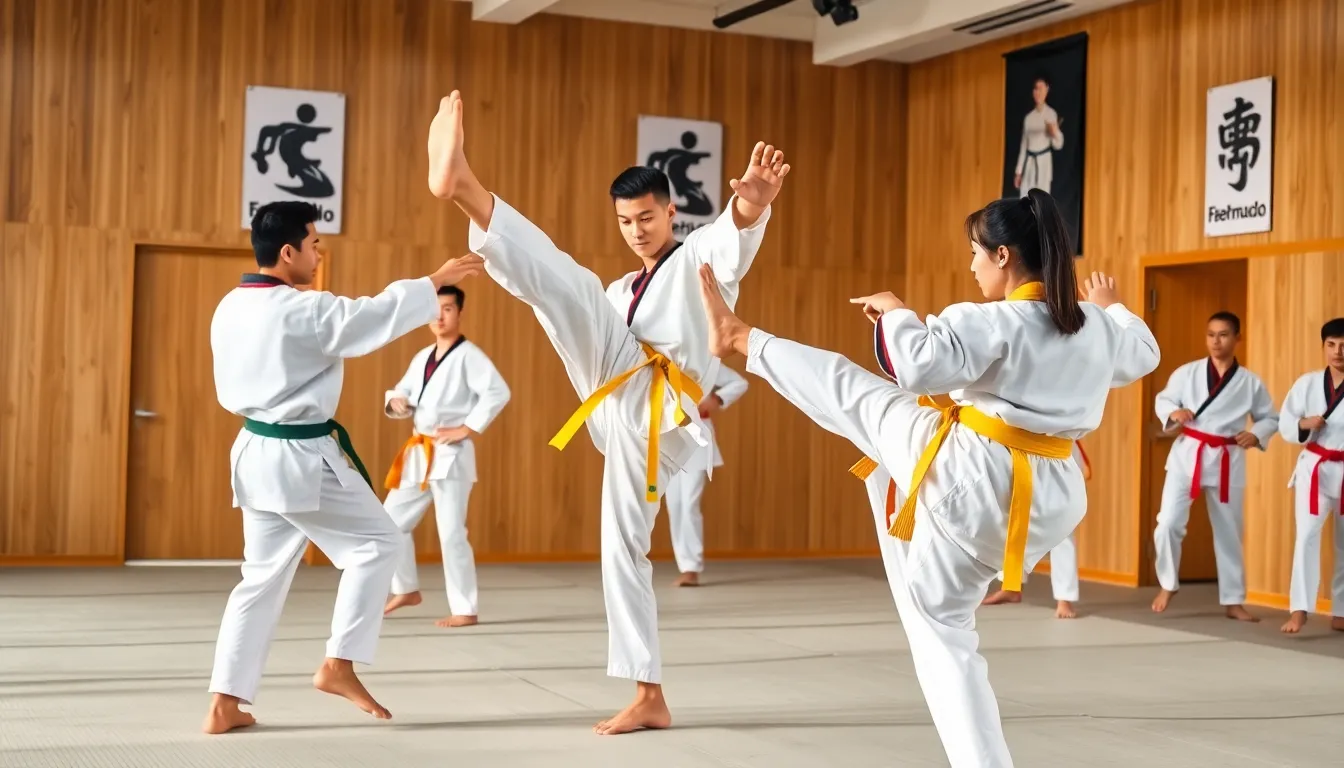Imagine a martial art where agility meets strategy, a dance of kicks and counters infused with a rich tradition. Welcome to the world of taekwondo. Whether you’re a novice stepping onto the mat for the first time or a seasoned black belt ready to perfect your craft, the intricacies of taekwondo bouts are captivating. This article will decode the essential rules, explore the latest competition formats, and even reveal how technology is revolutionizing the sport. Let’s dive deeper and uncover what makes taekwondo not just a discipline but a way of life.
Table of Contents
ToggleUnderstanding the Basics of Taekwondo

At its core, taekwondo is a martial art that emphasizes high, fast kicks and dynamic footwork. Originating from Korea, it’s not just about throwing punches and kicks: it’s a blend of traditional practices and modern competition. Knowing the basic stances like the ready position or the front stance can help the practitioner move fluidly during bouts.
nColors matter too. These represent levels of expertise and commitment, which helps unify students across different dojos. That bright yellow belt isn’t just a fashion statement: it signifies the hard work and dedication that’s been put into mastering the art. Understanding these foundational elements lays the groundwork for anyone interested in participating in actual bouts.
Types of Taekwondo Bouts
Taekwondo bouts can be categorized into two main types: sparring and forms. Sparring is where fighters face off in a competitive setting, showcasing their skills in real-time. This isn’t just about who can kick higher: it’s a test of speed, strategy, and reflexes. In sparring, points are awarded based on the accuracy and power of strikes.
nOn the other hand, forms, also known as “poomsae,” involve a prearranged set of movements executed with precision. Competitors are judged not only on their technical skill but also on their demonstration of power and rhythm. Each form tells a story of tradition, symbolizing the history of taekwondo and the values it espouses. Understanding these two types provides a well-rounded perspective on what athletes prepare for.
Recent Developments in Taekwondo Competitions
The world of taekwondo is always evolving. Recently, the introduction of innovations like electronic scoring systems has transformed the competitive landscape. These systems ensure that every kick and punch is accurately recorded, allowing for an unbiased assessment of performance. Competitors and coaches can now analyze matches with precise data, leading to high-level strategies that are continually fine-tuned.
nFurthermore, the rise of social media platforms has given athletes a stage to showcase their skills, attracting sponsorships and increasing the sport’s visibility. Events are more accessible than ever, thanks to live streaming, reaching global audiences who cheer for their favorite taekwondo stars from their living rooms. All these developments add layers of excitement to taekwondo competitions, making each bout not just a contest but a spectacle.
The Role of Technology in Taekwondo Bouts
Technology plays a pivotal role in modern taekwondo, from training apps that provide feedback on technique to wearable devices tracking physical performance. Coaches are increasingly using video analysis to break down fighters’ movements frame by frame. This helps pinpoint areas for improvement, turning weaknesses into strengths.
nAdditionally, innovations like VR training allow practitioners to simulate bouts against virtual opponents. This immersion can prepare athletes for the real thing, allowing them to visualize strategies and responses in a controlled environment. There’s no doubt that as technology advances, so does the potential for improving taekwondo training and performance.
Tips for Preparing for Taekwondo Bouts
Getting ready for a taekwondo bout involves more than just physical training. Mental preparation plays an equally important role. Visualization techniques can help fighters imagine different scenarios they might face in the ring. Practicing mindfulness can also alleviate performance anxiety, ensuring that athletes stay focused and calm.
nIn terms of physical prep, conditioning is key. Strength training, flexibility exercises, and sparring sessions will build the necessary stamina and agility. Nutrition shouldn’t be overlooked either. A balanced diet rich in proteins, carbs, and vitamins fuels the body for rigorous training and competition days. By incorporating these elements, an athlete can enter the ring with confidence.
The Forest and Its Influence on Taekwondo Training
While it may seem unusual, the forest can play a significant role in taekwondo training. Practicing in natural settings offers fighters a chance to connect with their surroundings, enhancing their focus and mindfulness. Training outdoors allows for unpredictable elements like uneven surfaces or changing weather, which can improve adaptability and resilience.
nMoreover, nature has a calming effect that can reduce stress levels, making it easier for athletes to channel their energy positively. Whether it’s performing forms beneath towering trees or doing calisthenics in the fresh air, incorporating the forest into training rituals can lead to improved performance and mental well-being.




